#wabanaki land
Explore tagged Tumblr posts
Text
Some good things happening at the local level: Land Back edition

The Confederated Tribes of Siletz Indians purchased back 2,000 acres of deeply historically significant land in Oregon, the site of both a massacre of Native people at the hands of the US army, and the site of a treaty signing that established a temporary truce and reservation. (Posted Jan 21, 2025)
The property was purchased directly from the previous landowner. The Nature Conservancy preserves a conservation easement on the land. The Siletz will continue to work closely with the Nature Conservancy and the BLM across the properties in the region to emphasize conservation and restoration. “To me, land back means, in its purest form, its return of lands to a tribe,” Kentta [citizen of the Confederated Tribes of Siletz Indians and the tribal council treasurer] said. “This is through purchase, and a significant amount paid out for the purchase. So for us, that is regaining of land back, but it's not a settlement or apology for things that happened in the past.”
The Tule River Tribe in California is moving forward with a plan to buy back 14,673 acres of rivers, forests, ranchland, and wetland in a conservation project partnering with The Conservation Fund, the Wildlife Conservation Board, and various California conservation organizations. It's set to move into Tule River control (or at least co-management? unclear to me) sometime this year. (Posted January 8, updated January 10, 2025)
Charmaine McDarment, chairwoman of the Tule River Tribal Council, said in a press release that the tribe appreciates help in restoring ancestral homelands. “As the climate crisis brings new pressures to address the effects of environmental mismanagement and resource degradation, the Tribe’s partnership with WCB is an important example of building relationships based in collaboration and trust. “The tribe remains committed to supporting co-stewardship efforts and fighting to ensure that disproportionate harms to Native American lands, culture, and resources are resolved in a manner that centers and honors Native American connections to ancestral lands.”
Illinois lawmakers voted to move Shabbona Lake State Park to the management of The Prairie Band Potawatomi Nation. The Illinois governor has a lot on his plate right now, but is expected to sign the bill into law. (Posted January 14, 2025)
The state House approved SB 867, which would transfer Shabbona Lake State Park to the Prairie Band Potawatomi. The bill now heads to Illinois Gov. JB Pritzker for his signature. The land transfer hinges on an agreement that the tribe continue to operate the property as a park, still open to the public. Final details will be established in a forthcoming land management agreement between the state and tribe. Prairie Band Potawatomi Chairman Joseph “Zeke” Rupnick said the bill’s passage was a “meaningful step” toward righting a historic old wrong. The land was originally part of the tribe's 1,280-acre reservation in northern Illinois. During Chief Shab-eh-nay's visit to family in Kansas, the land was unlawfully auctioned off, violating federal requirements for Congressional approval of tribal land sales. The tribe has sought to reclaim the land for nearly two centuries.
A Wabanaki food sovereignty group secured a no-strings-attached land deal to buy 245 acres of farm and forest in Maine, to focus on local, traditional, and sustainable foods. (Posted January 19, 2025)
What sets this purchase apart is that the land transfer comes without conservation easements. These easements, which frequently accompany land returns or transfers, are often well-meaning. However, they can inhibit Indigenous stewardship by preventing practices such as prescribed burning, subdivision, or particular kinds of zoning for buildings or infrastructure. A coalition of 12 organizations and several private donors helped secure the land for Niweskok [a nonprofit collective of Wabanaki farmers, health professionals, and educators] without easements, giving the Wabanaki nonprofit sovereignty over the property, according to Heather Rogers, Land Protection Program director for Coastal Mountain Land Trust. Her organization has helped finance the Goose River purchase through fundraising and advocacy efforts. “The land trusts had to approach it with humility - there are other ways to care for land that can end up with better outcomes, and I think we have all come to that realization,” Rogers said. “I think now that we've done it once, I think we would be open to doing it again that way.”
Conservation, food sovereignty, water management - a few hundred acres here, a thousand acres there, there is movement to put lands back in tribal control, which is a human rights win as well as an ecology/conservation one. This is mostly happening at state and even private levels, and is something to continue advocating for, pushing for, donating to, and finding out if you have any local movements advocating for this kind of thing near you and calling state-level lawmakers and representatives about.
1K notes
·
View notes
Photo

Manabozho Tales
Manabozho tales are the stories of the trickster figure and culture hero of the Ojibwe (Ojibway/Chippewa) and other Algonquin Native American nations of present-day northern United States and southeast Canada. Manabozho is a supernatural entity, often depicted with god-like powers, but is not a god, even though, in some stories, he is featured as the co-creator.
Manabozho Pictograph as a Giant Rabbit
D. Gordon E. Robertson (CC BY-SA)
According to Ojibwe lore (as well as that of the other Algonquin people), Manabozho (also given as Nanabozho) is a Spirit Being sent to earth by the Great Spirit (Gitchee Manidoo or Gitche Manitou) to teach animals, and then people, the right way to live. He sometimes does so directly, through instruction, other times through punishment, or, as he is a shapeshifter, through trickery and deceit.
As with the trickster stories of other Native peoples of North America – the Wihio tales of the Cheyenne, Iktomi tales of the Sioux, Coyote tales of the Shasta nation, Glooscap tales of the Wabanaki Confederacy, and many others – Manabozho appears sometimes as a wise man, sometimes as a fool, can appear as a hero, or as a villain, or even act like a petulant and petty child. Manabozho tales, like those of the other nations, always feature some form of transformation.
He sometimes appears as a man but is often depicted as a large rabbit and, in this form, is known as Mishaabooz ("Great Rabbit"). He may appear in any form he likes, however, whether a leaf or a stump (a form he favors in several tales) or anything else. He is credited by the Ojibwe, and other Algonquin people, with co-creating the earth (or, in some versions, dry land after a great flood), naming all the plants and animals, giving people the spiritual precepts of their religion (Midewiwin, "the way of the heart") teaching the people to fish, and inventing the characters of the Ojibwe written language, part of the Algonquian language family.
Ojibwe Culture & History
The Ojibwe are Algonquin people, related culturally, ethnically, and linguistically to others of the region of southeast Canada and the northern United States, and are members of the Council of the Three Fires, which also includes the Odawa and Potawatomi nations. The meaning of their name continues to be debated, but one possibility is suggested by scholar Adele Nozedar, who suggests it "means 'to roast until puckered' or 'puckered moccasin people' and refers to the puckered seams of the moccasins the Ojibwe wore" (337). The other name they are known by, Chippewa, began as a mispronunciation of Ojibwe, though both names became used by the people to refer to themselves.
The Ojibwe, like other Native American nations, claim they originated from the earth and, in their case, at the mouth of the waterway now known as the Saint Lawrence River in modern-day Quebec. They were at first a hunter-gatherer society until the establishment of permanent settlements of homes known as wigwams, usually made of birch bark over bent saplings and woven reeds (wiigiwaam in the Anishinaabe Algonquin language of the Ojibwe). Men built the wigwam and women were responsible for furnishing it.
Ojibwa Village
Paul Kane (Public Domain)
As with other Native American nations, the men hunted, fished, protected the village, and made war while the women maintained the home, cooked the food, raised the children, tended to the crops, and engaged in trade with other communities. Their spiritual/religious belief, Midewiwin, emphasizes the importance of balance within oneself, between the human community and the natural world, and working to heal rifts when they occur. Midewiwin ceremonies focus on the relationship between the individual and the spirit world to encourage respect for the environment and other people. Although still practiced, Midewiwin adherents declined after the arrival of Europeans and the spread of Christianity.
The Ojibwe first encountered Europeans through contact with French missionaries in 1640, established friendly relations with French fur traders, and acquired firearms and iron weapons from them which they used to drive the Lakota Sioux from the region and down onto the Great Plains. They sided with the French against the British during the French and Indian War (1754-1763), with the British against the Continentals during the American Revolutionary War (1775-1783), and with the British against the United States in the War of 1812. After that conflict, the United States attempted to forcibly relocate the Ojibwe west of the Mississippi River, but Chief Kechewaishke ("Great Buffalo", l. c. 1759-1855) negotiated settlement for the Ojibwe on reservations of their ancestral lands near Lake Superior.
The Ojibwe culture and language was adversely affected owing to the occupation of their lands by French, English, and Euro-American nations, but has survived, and the Ojibwe still live, more or less, along with the other Algonquin people, in the areas they occupied thousands of years ago. The language is still spoken and is used to tell the traditional tales like the three below.
Continue reading...
35 notes
·
View notes
Text
6/24/24: Reflections on Visiting Homeland & Indian Policy
This will be a series of short essays about my experiences visiting CRST (Cheyenne River Sioux Tribe). Edited & posted 7/30/24.

Standing beside the graves of my great-grandparents, William Garreau and his wife On the Lead.
I've just returned from a trip to the Cheyenne River Sioux Tribe (CRST), sovereign Lakota land surrounded by the state of South Dakota. This experience of going to this place where my ancestors lived was humbling, informative, and intense above all.
While I am an enrolled member of the Cheyenne River Lakota, I was born and raised in Maine; In many ways, this is where my heart is. I connect with the woodlands and the river that has been a constant companion to me through all my years. This, though, is not where my blood family or ancestors are from.

The sky here seems to stretch forever. You don't fully understand the enormity of it until you're under its expanse--But despite what you might hear about "prarie madness" in places where the "sky is too big", I felt comforted in knowing that this is where my family and ancestors lived, and continue to live.
Coming from Maine, tribal lands are handled differently. In traveling to a Native community here, you are very nearly assured that everyone living on reservation land is either Native themselves, or integrated into a Native family one way or another (married, adopted, etc). In off-reservation areas, there is still often recognition of the land's Indigenous roots, whether it be through place names or by signage. This is not to give too much credit to colonizers. The Wabanaki community has been steadfast in maintaining their cultural identity and asserting their presence. This is helped by the fact that these are truly ancestral lands; Wabanaki have lived here since time immemorial, and their archaeological record in the area goes back at least 5,000 years.
Indian policy in Maine also fundamentally differs from that out West. In my paper Triumph and Tribulation: Wabanaki Experiences, 1950-2020, I cover MICSA, perhaps the most significant Maine Indian land policy in recent years:
For the Passamaquoddy and Penobscot, their long battle with the State of Maine for land claims would bear fruit in 1980, with the passing of the Maine Indian Claims Settlement Act (MICSA).[1] MICSA was initially deemed a success and was the largest land claims settlement at the time, as well as the first to include provisions for land reacquisition.[2] The Act had tribes cede 12.5 million acres, or 60% of Maine, in exchange for $81.5 million divided between tribes.[3] The Houlton Band of Maliseets joined the settlement in 1979 and were provided with $900,000 for the purchase of a five-thousand-acre reservation, as well as federal recognition.[4] The breakdown of the $81.5 million between the Passamaquoddy and Penobscot was $26.8 million for each tribe, or 150,000 acres in unorganized territories—soft money.[5] The remaining $27 million would be split between the two with one million dollars set aside for infrastructure for elders.[6] MISCA also created the Maine Implementing Act (MIA) and the Maine Indian Tribal-State Commission (MITSC), which would define tribal-state relationships by establishing specific laws about Wabanaki peoples and their lands.[7] This served as a means to define and resolve discrepancies with MICSA, as it was largely considered much more legally rigid than the Wabanaki tribes had initially understood it to be.[8] This rigidity would ultimately be a major critique of MICSA and its associated provisions. There were concerns that MISCA did not respect Wabanaki tribes as sovereign nations but, rather, reduced reservation lands to municipality status.[9] State paternalism toward Indigenous peoples of Maine was effectively allowed to continue. Per-capita payments for MISCA were ultimately very little for many, hardly the windfall gain that many perceived it to be; additionally, many saw acceptance of the payments as agreement to the terms of MICSA, with which not all Wabanaki agreed.[10] Though MICSA was perhaps the first step in a road toward true self-determination, Penobscot, Passamaquoddy, and Maliseet people continued to struggle. Fears surrounding termination still loomed in the minds of many ...
The 1990s would bring the Aroostook Band of Micmacs (or Mi’kmaq, now considered the correct spelling) into the MICSA agreement. Following the 1980 settlement, and with the MIA considered no longer necessary, the Mi’kmaq had been largely left to fend for themselves.[11] Their fellow Wabanaki found it inappropriate to speak on their behalf.[12] In 1991, Congress would seek to correct this oversight: similar to the Maliseet, Mi’kmaq would receive $900,000 for a five thousand acre reservation, federal recognition, as well as $50,000 in additional property funds in dispersed settlements.[13]
However, like many tribes in the West, my oyate were affected by the disastrous Dawes Severalty Act (also known as General Allotment Act) in 1887. In short, this act would give Indians an allotment of land to farm or ranch (regardless of traditional living and subsistence practices). "Surplus" land not allotted was then sold off cheaply to white farmers and ranchers, creating something of a checkerboard affect in Indian country. I talk more about this in reblog discussing the issues of cottagecore on my main blog back in January.
Because of this, Cheyenne River Sioux Tribe land is still inhabited by a minority of white farmers and ranchers. While we had no incidents while picking timpsula, traveling through fields to Thunder Butte, or otherwise exploring and learning, the discomfort my aunties (residents of CRST) felt when encountering white ranchers was palpable.


Digging timpsula at CRST with my thiwahe (family)
Reservation lands have historically been a place where Indians are cloistered away. My grandfather would recall times when there were curfews for when they had to be back (though he would gleefully recall violating this curfew and riding around with friends and getting up to all sorts of car-related hijinks); an extension of US paternalism towards Indians. In earlier times (though not in such a distant past), Indian agents policed and monitored Indian behavior. Nuns and priests evangelized and enforced the ban on Indigenous religious practice. The cultural devastation created by these systems is still felt today. My great auntie, who lived on the reservation, was very Christian until the day she died. Our language continues to be endangered. Efforts to revitalize and maintain our culture are critical and complicated by generations of racial shaming, residential schools, and forced US paternalism that has caused us to become unwilling dependents.
This is one of the biggest recurring themes in Indian policy in the United States. We are set up to fail, and when we do, the US government can swoop in and claim we can’t take care of ourselves.
I don’t mean to engender a sense of hopelessness within this essay, far from it. There is hope. I want to make those outside of Indigenous communities viscerally aware of our struggles and our existence in the current moment. We are here, we are not peoples of the past, and everything is not okay. There is pain, but how we navigate our cultural wounds is a testament to our resilience as a people.
Within the Lakota Nation, there have been a number of programs to preserve and revitalize the culture. The Lakota Cultural Center in Eagle Butte has recently experienced a massive overhaul under the leadership of Dave West, current program director.

Me and Até outside the Lakota Cultural Center in Eagle Butte after getting my tribal ID
We were lucky enough to catch Dave during his work day at the center, and he graciously gave us an extremely in-depth and powerful tour of the museum. What stood out to me during my conversation with him was a re-orientation of cultural knowledge.
The Lakota Cultural Center has been doing important work in facilitating community nights and days were our oyate can come together and share knowledge on more equal footing. Tables and chairs are set up in a circle, so that, as Dave put it, "A six year old child and seventy year old elder can both be heard." Workshops may range from traditional crafts to singing, story-telling, gathering, and language-sharing.

Elk hide prepared by CRST youth.
Community engagement with traditional practices is not only sacred, but helps heal and offers a healthy outlet for pain we may be feeling.
Something I've taken away from my work this summer, and what I intend with this blog is similar to the cultural center's message-- Knowledge sharing. Knowledge is power as much as it is healing. I believe it is critical to share knowledge not only without our own communities, but outside of them as well; To facilitate a conversation between Indigenous communities and our neighbors (all residents of Turtle Island).
I hope to share more about my trip in follow-up posts. This installment has been focused on Indian land policy and cultural revitalization. If you've made it to the end, I want to thank you for taking the time to read and engage. Please feel free to share your thoughts in comments! Respectful conversation around my posts is very encouraged. Have a wonderful day!
Check out my (free) substack!

Citations & References:
[1] Lecture NAS 222, 4/15/24. [2] Girouard, 60. (Girouard, Maria L. 2012. “THE ORIGINAL MEANING AND INTENT OF THE MAINE INDIAN LAND CLAIMS: PENOBSCOT PERSPECTIVES.” Graduate School: University of Maine.) [3] Lecture 4/15/24. [4] Ibid. [5] Ibid. [6] Ibid. [7] Ibid; Girouard, 60. [8] Girouard, 60. [9] Lecture 4/15/24. [10] 4/19/24.
[11] Brimley, Stephen. 2004. “Native American Sovereignty in Maine” Maine Policy Review 13.2 (2004) : 12 -26. http://digitalcommons.library.umaine.edu/mpr/vol13/iss2/4., 22. [12] Ibid. [13] Lecture 4/19/24.
25 notes
·
View notes
Text
Acadian Day (LA)
While this day is to celebrate the resilience, contribution, and culture of Acadians, it's also Native American Heritage Day, so I'd also like to celebrate and thank the Wabanaki Confederacy, specifically the Mi'kmaq, Penobscot, and Wolastoqey Nations.
Without the Mi'kmaq Nation accepting the French colonizers onto their land and extending a hand of peace and teaching, the French would not have easily survived, if at all.
Thanks to the bravery and resistance of the Penobscot and Wolastoqey Nations, some of the Acadians were able to evade capture, deportation, and death. If not for them, there would have been nothing for the returning Acadians to come home to.
Thanks to all of them, the Acadians were able to settle deep roots that would resound through time.
Wela'lin, Mi'kmaq Nation.
Woliwoni, Penobscot Nation.
Woliwon, Wolastoqey Nation.
We owe more than we could ever repay to you.
⋘ ⋙
In honor of my ancestors who came to Nova Scotia from France and those who left Nova Scotia to France or Louisiana.
|| Paternal Grandfather's Father's Line
Charles Olivier Miquel Guillot (1746 Nova Scotia, CA - 1845 Louisiana, USA) and his wife Madeline Josephe [Boudreaux/Boudrot] Guillot (1744 Nova Scotia, CA - N/A).
Charles' father, Jean Baptiste Guillot (1720 Nova Scotia, CA - 1759 Atlantic Ocean).
Jean's mother, Marguerite [Doiron] Guillot (1669 Nova Scotia, CA - 1759 Nova Scotia, CA).
Marguerite's parents, Jean Doiron (1677 Nova Scotia, CA - 1735 Nova Scotia, CA) and Marie Anne [Trahan] Doiron (1671 Nova Scotia, CA - 1710 Nova Scotia, CA).
Mary Anne's parents, Guillaume Trahan (1611 France - 1682 Nova Scotia, CA) and Madeleine [Brun] Trahan (1645 France - 1700 Nova Scotia, CA).
Madeleine's parents, Vincent Brun (1611 France - 1693 Nova Scotia, CA) and Marie Renee [Breau] Brun (1616 France - 1686 Nova Scotia, CA).
|| Paternal Grandmother's Mother's Line
Silvain Sonnier, Sr. (1736 Nova Scotia, CA - 1801 Louisiana, USA) and his wife Marie Magdeleine [Bourg] Sonnier (1744 Nova Scotia, CA - 1814 Louisiana, USA).
Jean Baptiste Granger (c1741 Nova Scotia - 1842 Louisiana, USA) and his wife Susanne [Cormier] Granger (c1763 Nova Scotia, CA - 1800 Louisiana, USA).
Alexandre Aucoin (1725 Nova Scotia, CA - 1780 France) and his wife Isabelle [Duhon] Aucoin (c1750 Nova Scotia - 1817 Louisiana, USA).
#Acadian Day#Native American Heritage Day#Mi'kmaq#Penobscot#Wolastoqey#Acadian#Acadians#genealogy#ancestry#family#ancestryblog#blog#familyresearch#familytree#Cajun#Cajuns#Cajun Creole#Cajun Creoles#Louisiana#Nova Scotia#France#Acadie#Acadia#acadian expulsion#acadiana
8 notes
·
View notes
Note
😗 — what are some of your favorite things to do when you have some time to yourself?
💯 — share three random facts about yourself that your mutuals may not know about you.
😗: either writing (currently mostly rp, though I sometimes write drabbles, my long fic is on hiatus and has been for two years now, unfortunately), crafts (currently crochet, embarrassingly thanks to my main muse, Ed, though others I've taken up in the past include friendship bracelets and book binding...), or volunteering with the local greyhound adoption group. I also like to go hiking and would like to try backpacking but the first is contingent on having the energy for it, and the second on time, which I won't have much of for at least the rest of the month.
💯: hmmm. Okay...
I have storm spotter certification for the area of Maine that my local weather forecasting office covers, as well as for the Norman, OK forecasting area where I used to live!
My brother and I are exactly thirteen months apart, to the day. He has always been my best friend.
I've been to Greenland, Iceland, France, Belgium, Canada, and Mexico, and some places I hope to eventually visit are Spain, Chile, Brazil, Australia, and New Zealand. I also really want to visit Antarctica, and though that one isn't impossible given I'm surrounded by folks who study ice cores, that currently isn't my path.
Several fun facts not specifically about me but that is of interest to you: Without giving out the specific tribe name since that could potentially dox me, I live on the ancestral land of the Wabanaki people; Wabananaki means 'people of the dawn'. The kalallitsut (greenlandic) word for 'thank you' is qajanaq (j makes i sound), and the Inupiaq (if I'm remembering the workshop correctly) word is kayanakpak.
I should probably say here that I am not an indiginous person, but the program I am part of has a large focus on co-production with indigenous groups in Maine and in Greenland.
3 notes
·
View notes
Text

information
full name: Evelyn Nungarrayi
nickname(s) / goes by: Evie
pronouns & gender: She/her, cis woman
sexuality: Pansexual
birth date: October 29, 1993 (age 31)
birth place: Ballina, New South Wales, Australia
arrival to merrock: 2010, moved with her mother at age 17
housing: a small, no-nonsense apartment above a weathered bait-and-tackle shop by the harbor (coastal area).
occupation: Dockhand / part-time emergency response trainer
work place: Merrock Harbor — known for her stamina, quiet work ethic, and the way she can shoulder crates twice her size without complaint. Occasionally steps in for emergency coordination when disaster hits.
family: Mother: Robyn Nungarrayi, Father: Unacknowledged — Evie doesn’t speak of him, Grandmother: May Nungarrayi (deceased), Siblings: None — but grew up surrounded by cousins and aunties
relationship status: Single
personality
Evie doesn’t sugarcoat anything — she’s blunt, sharp when she needs to be, and not afraid to bite back if someone comes at her sideways. She’s hard-hearted in the way people become when they’ve seen too much and been let down one too many times. She doesn’t tolerate bullshit, doesn’t explain herself, and doesn’t chase people who don’t want to stick around. While she’s generally quiet, she’s not passive — when she speaks, it’s with purpose, and if she’s mouthing off, you probably deserved it. Loyalty is earned, not handed out, but once you’ve got her in your corner, she’s immovable. Underneath all that armor is a heart that still beats for the people she loves — she just doesn’t show it with softness. She shows it by showing up.
portrayed by Madeleine Madden; penned by Jen.
full biography / background
triggering / sensitive content warning: death, grief, loss, ptsd, military, military trauma, racism
There are some people who move through the world without needing to explain themselves. Evelyn “Evie” Nungarrayi is one of them. She doesn’t talk much, doesn’t smile unless it’s real, and doesn’t ask for anything she can earn with her own two hands. In Merrock, she’s the one hauling crates down by the docks before the sun’s fully up, her dog Rigs trailing close behind, silent and sharp-eyed. Most folks know better than to pry, but everyone knows she’s someone you can count on when it matters.
Evie was born in Ballina, New South Wales, and raised between there and Cabbage Tree Island, surrounded by riverbanks, storylines, and generations of strong matriarchs. Her mother, Robyn, and her grandmother, May, were her anchors — women who carried culture like breath, teaching her language, land, and legacy with quiet, unwavering presence. Evie was never loud, but never lost in the crowd. The kind of kid who listened more than she spoke, who painted in the dirt with a stick while the other kids splashed in the river.
Everything changed when she was seventeen. May passed away, and Robyn — cracked open by grief and longing — made the decision to leave. Not to escape, exactly, but to find room to breathe. The two of them moved to the U.S. that same year, landing in the coastal town of Merrock, Maine — a place of tall trees, thick fog, and unfamiliar stars. Evie didn’t fight the move. She never really fought anything. She just went.
The adjustment was slow, but steady. She worked odd jobs, kept to herself, and slowly let the rhythm of this new land settle into her bones. Merrock didn’t feel like home — not the way her ancestral Country in Australia did — but it was quiet, and it gave her space to think. Through Robyn, she found connection to the local Wabanaki community and began volunteering behind the scenes. It reminded her of what she’d left behind, but not in a way that made her ache. In a way that helped her remember.
At twenty-two, after a messy breakup and a long silence between her and Robyn, Evie enlisted in the U.S. Air Force. The reasons were layered — part ambition, part reckoning, part need for something she couldn’t name. She specialized in intelligence operations, focusing on disaster response and logistics. It suited her: she was calm in chaos, quick with her hands, and comfortable staying invisible until the moment called for her to lead.
Her service took her all over the world — fire zones, flood zones, evacuation sites, refugee camps. She coordinated extractions after hurricanes. She helped rebuild logistics in burned-out towns. And once, in Afghanistan, she lost a friend — someone who made her laugh, someone who called her out, someone who didn’t make her explain herself. That loss stayed with her. Still does.
She never fully felt at home in the uniform. Being the only Aboriginal woman in some rooms reminded her just how far she’d traveled — not just in distance, but in spirit. It was a quiet kind of isolation, the kind that made her ache for home in ways she couldn’t explain. She kept her grief to herself. She always had.
At twenty-nine, she left the military. No fanfare. No ceremony. Just packed her bags and drove. Somewhere along the way, she found Rigs, a half-wild Kelpie x Blue Heeler mix with a notched ear and a growl sharper than his bite. She fed him once and he never left her side.
She came back to Merrock in July of 2023, almost thirteen years after she first arrived. The town hadn’t changed much — still slow, still weathered, still watching. Robyn was still there, too. A little older. A little softer. Their relationship has its edges, but there’s love beneath it. Always has been.
Now, Evie works as a dockhand at Merrock Harbor — a job most people don’t want, but one she handles with quiet precision. She also trains volunteers for a civilian emergency response agency, stepping in when storms roll through or fires spark too close to home. She’s good in a crisis. She always has been.
Outside of work, she keeps to herself. Lives in a small flat above an old bait-and-tackle shop that smells like salt and rust. Drinks black coffee. Smokes on the pier sometimes. Sleeps light. She runs art therapy workshops at a local youth center once a week, though she doesn’t call it therapy. Just "painting and talking, if they want." She also volunteers with Wabanaki support programs, listening more than she speaks, and shows up when it counts.
There’s a box under her bed. Inside are old letters she hasn’t opened, a tin of ochre from home, and her nan’s worn-out R.M. Williams boots. She hasn’t painted in a long time, not since the desert. But she still mixes color in her head, still sees storylines in the grain of the wood, still feels Country when she walks along the Merrock shoreline.
People in town say she’s hard to read. That’s fine. She’s not here to be understood. She’s here to build something quiet. Something honest. Something that might, someday, feel like home.
1 note
·
View note
Text
In 2023, a team of 4 boat-makers (Mashantucket Pequot, Mashpee Wampanoag, Togolese, and Ghanaian) collaborated at Mystic Seaport Museum to create a dugout canoe using both traditional and contemporary methods.
The ten-day collaboration explored similarities in Dawnland* and African maritime histories and cultures, imagined how these maritime traditions may have continued if not interrupted, and allowed us to imagine conversations on boat construction as free and enslaved African descended people joined Dawnland Indigenous communities.
*Dawnland is the English translation of Wabanaki, an Algonquian term for the traditional lands of the five indigenous nations of the Wabanaki Confederacy, corresponding to the New England states and Atlantic Canada. Here it is used to refer to the overall region and all of its indigenous peoples, both Wabanaki and otherwise.
#the sea#mystic seaport#Comme un seul homme#Pequot#wampanoag#Togo#Ghana#Wabanaki Confederacy#the seas in arts and culture
0 notes
Text
thoughts of the day: 5/23
What I've mostly been ruminating on this week is ideas of Euro-American versus Indigenous thoughts around land use.
This week I visited Hirundo Wildlife Refuge in Western Old Town. The refuge has done its due diligence in recognizing this as a place where Wabanaki historically lived and gathered, as far back as 5,000 years ago. It is registered in the National Register of Historic Places by the U.S. Department of the Interior. In the 1970s, the University of Maine did an archaeological dig at the site, and the land still bears the marks of those digs.
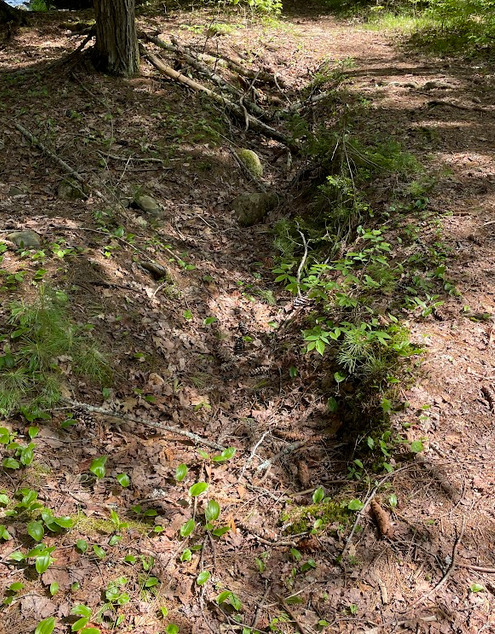
On one hand, the recognition of this historical significance is good, but it also continues to place the importance of this place firmly in the past. "This was a place for the Wabanaki, but now it is a wildlife refuge, and isn't it so nice that we're taking care of it and keeping it safe from human hands?"
The removal of humans from the ecosystem seems to be a distinctly European idea; In their eyes, the relationship between humans and the environment is necessarily destructive and exploitative rather than symbiotic. This leads to the popular idea among disillusioned, often white academics that the world would be better off without humans in it.
Robin Wall Kimmerer explores this idea further in her 2013 novel "Braiding Sweetgrass", a collection of essays that marries Indigenous knowledge and Western science beautifully. I believe that each have their place, but in order to best learn, we need to utilize Two Eyed Seeing (interestingly, an idea that was first brought forward and named by two Mik'maq (Wabanaki) elders).
To my point.
In the first chapter of Kimmerer's book, "Skywoman Falling", she compares Indigenous and Western creation stories. Skywoman's relationship between the animals and plants (non-human relatives, as my mentor often says) is symbiotic and serves to better the lives of both.
Meanwhile, the Christian creation story and relationship Adam and Eve have with their environment is far less reciprocal. They are shunned from their comfortable home and left to suffer in the world, and must take what they can get to survive. I think this lies at the center of much of Christian (and thus, Western) ideology--That we must take.
Reciprocity is so very important to Indigenous lifeways and environmentalism. I return to ideas of place and how this centers around my visit to Hirundo, and the readings I did this week (Specifically, exploring Samantha Senda-Cook's piece, Materializing Tensions: How Maps and Trails Mediate Nature). The public often tends to view National Parks and wildlife reserves as being raw nature, but these too are shaped by human hands to cater to a certain demographic, to fulfill ideas of what nature "should" look like. But they are managed, and their trails managed to a degree. As Senda-Cook puts it:
Like Niagara Falls, some landscapes that have been physically altered are perceived as not constructed, as ‘‘natural.’’ For example, Olmsted (1863/1990) best known for designing New York’s Central Park was concerned with presenting nature to at once cultivate visitors’ feelings and mask such cultivation. He planned every aspect of a landscape, including details such as flower head size and stem length, to communicate particular messages and evoke particular emotions. La Pierre (1997) described how the National Park Service (NPS) has started to include human artifacts such as roads in preservation efforts because they have become as important to the landscape as the land itself. She explained that visitors love the views from the road in Acadia National Park in Maine. ‘‘What visitors may not realize is that John D. Rockefeller, Frederick Law Olmsted, Jr., and others deliberately manipulated nature to achieve those views’’ (p. 32). Finally, as Spirn (1996) contended, efforts to construct landscapes such as the ones enacted by Olmsted remain largely invisible to park visitors. She states, ‘‘Few people now recognize [Central Park, Niagara Falls, and Yosemite] as built landscapes’’ (p. 91). These places carry a unique kind of material rhetoric that appears natural. (Senda-Cook, pg. 357.)
I've also ruminated on how National Parks have served to block cultural access to traditional hunting grounds, fisheries, and places were medicines may be gathered, such as in Acadia National Park. Acadia is my next destination in exploring my thoughts and research. I will explore this idea more in my next post.
3 notes
·
View notes
Text

Acadia National Park in Maine has many claims to fame. It was the first national park east of the Mississippi. Generations of artists have immortalized its mountains, forests and rocky coastline. And of course, Acadia is the first place the see the sunrise in the continental United States. It’s history includes Native Americans, who have inhabited the land for 12,000 years. Today four distinct tribes - the Maliseet, Micmac, Passamaquoddy and Penobscot - are known collectively as the Wabanaki, or “People of the Dawnland.” Photo courtesy of J.K. Putnam.
0 notes
Text
"Penobscot Nation to Reclaim Ancestral Land in North Central Maine" (published 1 November 2023, shared here on 5 November 2023).
The Penobscot Nation has plans to reclaim more than 30,000 acres of their homeland in Maine from a national nonprofit Trust for Public Land (TPL), according to a press release from the organization.
The transfer will put the acreage— taken from the Penobscot Nation in the nineteenth century in the Katahdin region of Maine— back into tribal stewardship, the nonprofit said. TPL purchased the land when it went up for sale in 2022. “We are very excited to work with TPL towards this common goal of returning a portion of unceded lands back to the governance of the Penobscot Nation,” said Penobscot Nation Chief Kirk Francis in a statement. “We are also ecstatic for the opportunity to explore and improve the aquatic and wildlife habitat within this parcel to conserve more land in the Katahdin region for our future generations.” The 31,367 acres going back to the Nation sit within the Penobscot River watershed and include forests, recreational trails, wetlands, and more than 50 miles of streams. The nonprofit and tribe will work together to: re-establish the Penobscot Nation as legal stewards of the land, create public access to the southern portion of the land, and boost local economies through the creation of public access, TPL said. Trust for Public Land President and CEO Diane Regas said the land back announcement isn’t “just an isolated act, but a deep acknowledgment and reaffirmation of a timeless bond, a rich history, and a promising future.” As we collaborate with the Penobscot Nation, the National Park Service, and local communities, we are driven by a shared vision: to honor and help restore the rich tapestry of Wabanaki connection to land and ensure that Katahdin Woods and Waters National Monument can be accessed and enjoyed by all."
1 note
·
View note
Text
"Gatherers, harvesters, hunters, and healers have lost knowledge as a result of being kept out of national parks and prevented from accessing their own history, their own lands and waters. The loss is accelerating as parks are affected by overcrowding, pollution, and a changing climate. ...
The sweetgrass project also shows how Indigenous scientific approaches can generate new thinking—and more accurate results. Previous studies by Robin Wall Kimmerer, Laurie Reed, and others had demonstrated that just as a lawn grows back thicker after being mowed, stem density increases after harvest of sweetgrass. According to preliminary findings presented by Greenlaw and Baumflek at the 2021 Acadia National Park Science Symposium, the plots selected by the [traditional] gatherers had, on average, a 30 percent increase in stem density after harvest. The botanist-selected plots, however, had no change."
If you can recognize how much of North America was cultivated over thousands of years by indigenous people, then you also need to recognize that a significant chunk of "wilderness" here is dependent on human intervention to thrive.
There are countless plants and fungi, from mushrooms to grasses to trees, that have been proven to do best when regularly harvested, whether it's because harvest makes them release seeds or clears away dead growth or provides more light to younger plants, cultivation means that harvesting is often to the benefit of the plant.
Which means that you also have to recognize that locking those plants away from people, even with the best intentions, can actually do horrible damage to their populations and to existing ecosystems.
There isn't an easy solution to this problem. Proper foraging isn't something that most people are taught anymore and many of these plants do not have significant enough populations right now to survive excessive harvest.
But going forward, as we work on restoring ecosystems and helping our planet (and our relationships to the land) heal, then we need to acknowledge that humans and nature are not separate entities and that we've always been dependent on each other.
8K notes
·
View notes
Text
"Hidden History Unveiled: University of New Brunswick's Bold Move Ignites a Stir by Raising the Wolastoqey Flag Permanently - What Are They Really Celebrating?"
The flags of the Wolastoqey Nation and the Wabanaki Confederacy were ceremoniously raised on the University of New Brunswick’s Fredericton campus, serving as a permanent testament to the university’s location on Indigenous land. This symbolic gesture was chosen as part of the university’s observance of Truth and Reconciliation Day. University President Paul Mazerolle emphasized the significance…

View On WordPress
0 notes
Text
"Hidden History Unveiled: University of New Brunswick's Bold Move Ignites a Stir by Raising the Wolastoqey Flag Permanently - What Are They Really Celebrating?"
The flags of the Wolastoqey Nation and the Wabanaki Confederacy were ceremoniously raised on the University of New Brunswick’s Fredericton campus, serving as a permanent testament to the university’s location on Indigenous land. This symbolic gesture was chosen as part of the university’s observance of Truth and Reconciliation Day. University President Paul Mazerolle emphasized the significance…

View On WordPress
0 notes
Text
youtube
Creation story told in Abenaki, a language of the Wabanaki peoples (Abenaki, Mi'kmak, Penobscot, Passamaquoddy, Maliseet) of the northeast.
Short documentary in Passamaquoddy and English, featuring traditional story and music, featuring cellist Yo-Yo Ma.
I'm gonna reblog with some videos of people speaking various American Indian/indigenous American languages, because I think most people don't even know what they sound like. Not to be judgement of that—just, you know, I think people who want to be informed should know what they sound like!
#turtle island#language#heritage#indigenous american#navajo#dine'#tlingit#lakota#salish#cherokee#maya#greenlandic#mowhawk#yup'ik#abenaki#passamaquoddy#Youtube
29K notes
·
View notes
Link
“The Passamaquoddy Tribe has reacquired almost the entirety of a 150-acre island in Big Lake that was illegally taken from them in the mid-19th century in violation of a 1794 treaty and the Maine Constitution.
The acquisition of most of the island – known as White’s Island by Euro-American settlers since the 1850s but as Kuwesuwi Monihq, or Pine Island, by the Passamaquoddy – was facilitated by a burgeoning partnership between Maine’s tribes and the conservation community that aims to help restore key territories to Wabanaki control.”
#passamaquoddy tribe#landback#indigenous sovereignty#conservation#maine#wabanaki#now#land back#articles
674 notes
·
View notes
Photo

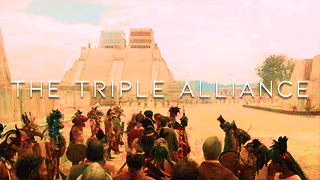
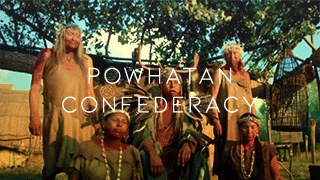
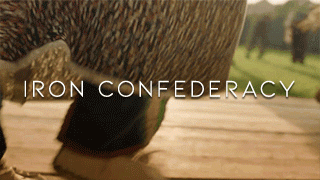
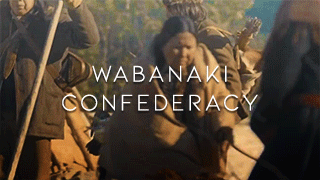
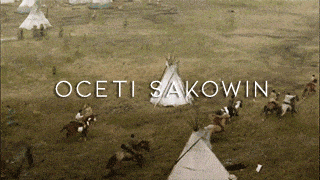
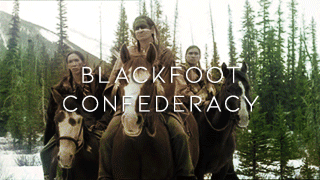
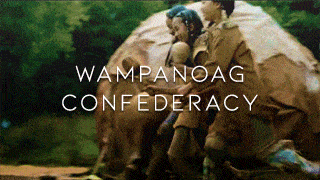
Native American Confederacies:
Haudenosaunee: Also known as the Iroquois Confederacy or the Six Nations, consist of the Mohawk, Onondaga, Oneida, Cayuga, Seneca, and later, Tuscarora. They were formed prior to European contact, and their form of government started by the Great Law of Peace was used as a Model for that of the United States Constitution. Oral tradition suggests the confederacy was formed before an eclipse circa the early 12th century.
The Triple Alliance: Later known as the Aztec Empire, was formed in 1428 under the leader Itzcoatl, wherein the Mexica formed a three-way alliance with the Texcocans and the Tacubans to defeat their most powerful rivals for influence of the region. They later became a dominant force ruling over multiple tribes and political factions until the invasion by the Spanish.
Powhatan Confederacy: Created in the late 16th century, was founded by Paramount Chief Wahunsenacah (Father of Matoaka, also known as Pocahontas), affiliating some 30 tribes in Virginia, creating the Powhatan Confederacy. Each tribe was led by a weroance that paid tribute to the Paramount Chief and allied together politically, economically, and militarily. Affiliated tribes included the Pamunkey, Patawomeck, Quiyoughcohannock, Chesapeake, Appomattock, Kiskiak, Mattaponi, Rappahannock, Werowocomoco, and more.
Iron Confederacy: political and military alliance of individual tribes against common enemies, membership included the Cree, Stoney, Metis, Saulteaux, and Nakota. It is unknown when it was first founded, but it existed at the arrival of settlers during the early 17th century and likely was created earlier.
Wabanaki Confederacy: Made up of the Mi’kmaq, Maliseet, Passamaquoddy, Penobscot, and Western Abenaki, this alliance was formed due to the common enemy of the English colonizers, whom they would go to war with in the First Abenaki war, which was then ended with the Treaty of Casco. They incorporated political elements from neighboring confederacies, such as the use of wampum for treaties, and they have their own symbol for the alliance.
Oceti Sakowin: known as the Seven Council Fires, (Titunwan, Yankton, Yanktonai, Mdewakanton, Wahpeton, Wahpekute, & Sisseton) is and was an alliance of Peoples divided into 3 ethnic groups, the Lakota, the Eastern & Western Dakota. Around 1300 AD, after years of moving from their ancestral lands of the central Mississippi Valley region, they adopted the characteristics of a northern tribal society and became known as the Seven Council Fires. Their battles against colonizers are some of the most well known, such as the Battle of Little Big Horn.
Blackfoot Confederacy: Is made up of 4 Nations with the same language. The Nations have their own governments, but banded together in political, spiritual, and social alliance. The affiliated tribes are the Siksika, Kainai, Peigan, and Pikani, and later, Tsuu T’ina was added to the confederacy. Their territory stretched from along the North Saskatchewan River in Canada to the Yellowstone River in Montana, and within the Rocky Mountains. They were known as a formidable alliance, often going to war with the Iron Confederacy.
Wampanoag Confederacy: Once a loose Confederation in the early 17th century, now one consisting of 10 tribes, are and were an alliance of multiple Peoples in Southern Massachussetts and Rhode Island, including the Chappaquiddick, Nantucket, Mashpee, Patuxet, Assawompsett Nemasket, Pocasset, Pokanoket, Nauset, Herring Pond, and Aquinnah. Being located on the Eastern coast of the United States, they were some of the first to meet colonists in the United States, and suffered casualities of illness, and resisted Colonization such as with King Phillip’s war.
#historyedit#native american history month#native american history#ndn#indigenous history#blackfoot#wampanoag#oceti sakowin#iron confederacy#powhatan#triple alliance#wabanaki#haudenosaunee#iroquois#justin's edits
1K notes
·
View notes